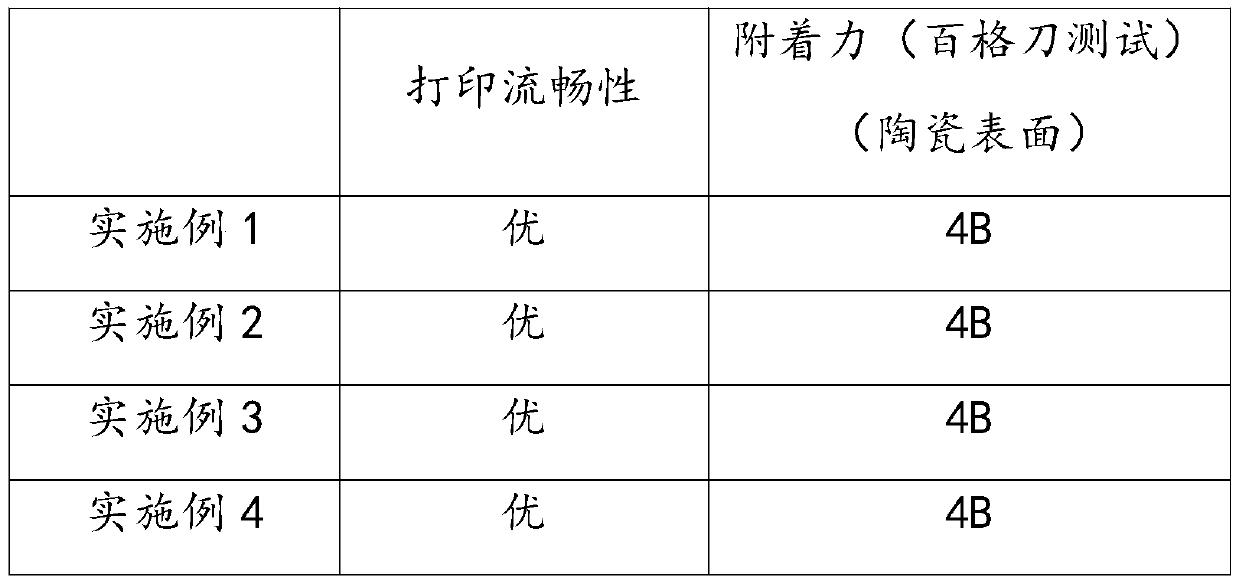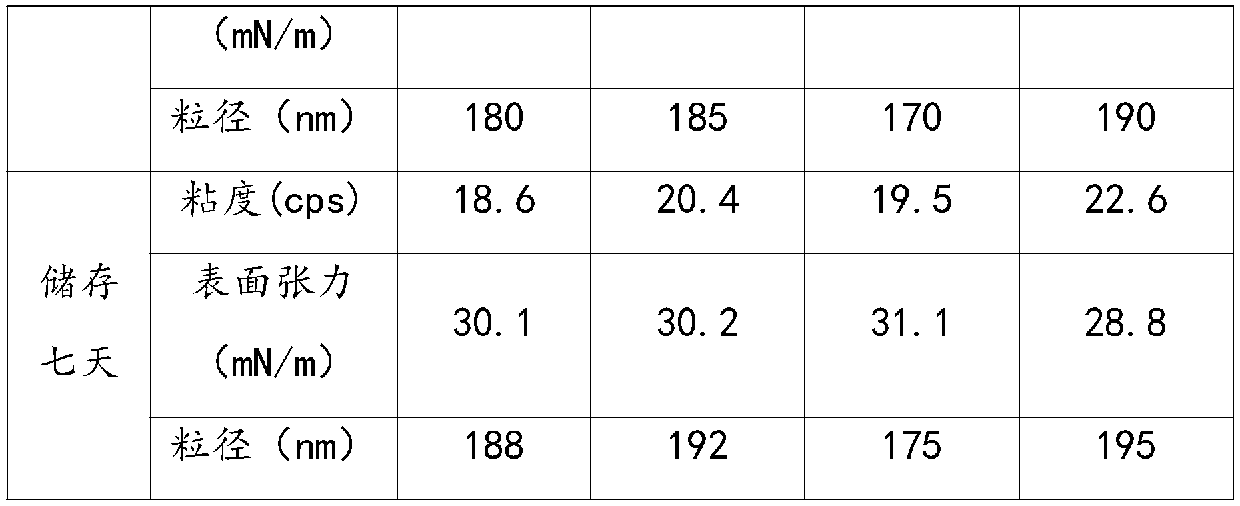Inorganic pigment UV inkjet ink suitable for industrial head and preparation method thereof
A technology of inorganic pigments and inkjet inks, applied in inks, applications, household appliances, etc., to achieve the effects of reducing pollution, good dispersibility, and reducing surface tension
- Summary
- Abstract
- Description
- Claims
- Application Information
AI Technical Summary
Problems solved by technology
Method used
Image
Examples
Embodiment 1
[0026] Take 50 parts of cyan pigment, 15 parts of aldehyde and ketone resin, 20 parts of monomer, and 5 parts of dispersant with a balance, pour the above-mentioned components into the stirring device, stir with a mechanical mixer for 20 minutes to make them evenly mixed, and then pour them into sand In the grinding chamber of the mill, use a sand mill to grind and disperse for 45 minutes, and test its particle size. If the particle size is less than or equal to 150nm, stop grinding to obtain the base ink; mix 30 parts of base ink, 20 parts of agent, 30 parts of diluted monomer, and stirred with a mechanical mixer for 60 minutes to make it evenly mixed, and tested the indicators and performance of the ink. After passing the test, it was filtered and packaged to obtain the inorganic pigment UV inkjet ink.
Embodiment 2
[0028] Take 60 parts of inorganic pigments, 10 parts of aldehyde and ketone resins, 22 parts of monomers, and 8 parts of dispersants with a balance, pour the above components into the stirring device, stir with a mechanical mixer for 40 minutes to make them evenly mixed, and then pour them into sand In the grinding chamber of the mill, use a sand mill to grind and disperse for 30 minutes, and test its particle size. If the particle size is less than or equal to 150nm, stop grinding to obtain the base ink. If the particle size is greater than 150nm, continue grinding until the particle size is less than or equal to 150nm; 10 parts of base ink, 10 parts of acrylic resin, 12 parts of photoinitiator, 5 parts of auxiliary agent and 48 parts of monomer are mixed, stirred with a mechanical mixer for 40 minutes to make it evenly mixed, and the indicators and performance of the ink are tested, filtered and packaged after passing the test. An inorganic pigment UV inkjet ink is obtained. ...
Embodiment 3
[0030] Take 70 parts of inorganic pigments, 10 parts of aldehyde and ketone resins, 10 parts of monomers, and 10 parts of dispersants with a balance, pour the above components into the stirring device, stir with a mechanical mixer for 50 minutes to make them evenly mixed, and then pour them into sand In the grinding chamber of the mill, use a sand mill to grind and disperse for 30 minutes, and test its particle size. If the particle size is less than or equal to 150nm, stop grinding to obtain the base ink. If the particle size is greater than 150nm, continue grinding until the particle size is less than or equal to 150nm; Parts of base ink, 10 parts of acrylic resin, 12 parts of photoinitiator, 5 parts of auxiliary agent, and 48 parts of monomer. Stir with a mechanical stirrer for 40 minutes to make it evenly mixed, test the various indexes and performances of the ink, filter and pack after passing the test, and obtain the inorganic pigment UV inkjet ink.
PUM
| Property | Measurement | Unit |
|---|---|---|
| particle diameter | aaaaa | aaaaa |
| particle diameter | aaaaa | aaaaa |
Abstract
Description
Claims
Application Information
 Login to View More
Login to View More - R&D
- Intellectual Property
- Life Sciences
- Materials
- Tech Scout
- Unparalleled Data Quality
- Higher Quality Content
- 60% Fewer Hallucinations
Browse by: Latest US Patents, China's latest patents, Technical Efficacy Thesaurus, Application Domain, Technology Topic, Popular Technical Reports.
© 2025 PatSnap. All rights reserved.Legal|Privacy policy|Modern Slavery Act Transparency Statement|Sitemap|About US| Contact US: help@patsnap.com



